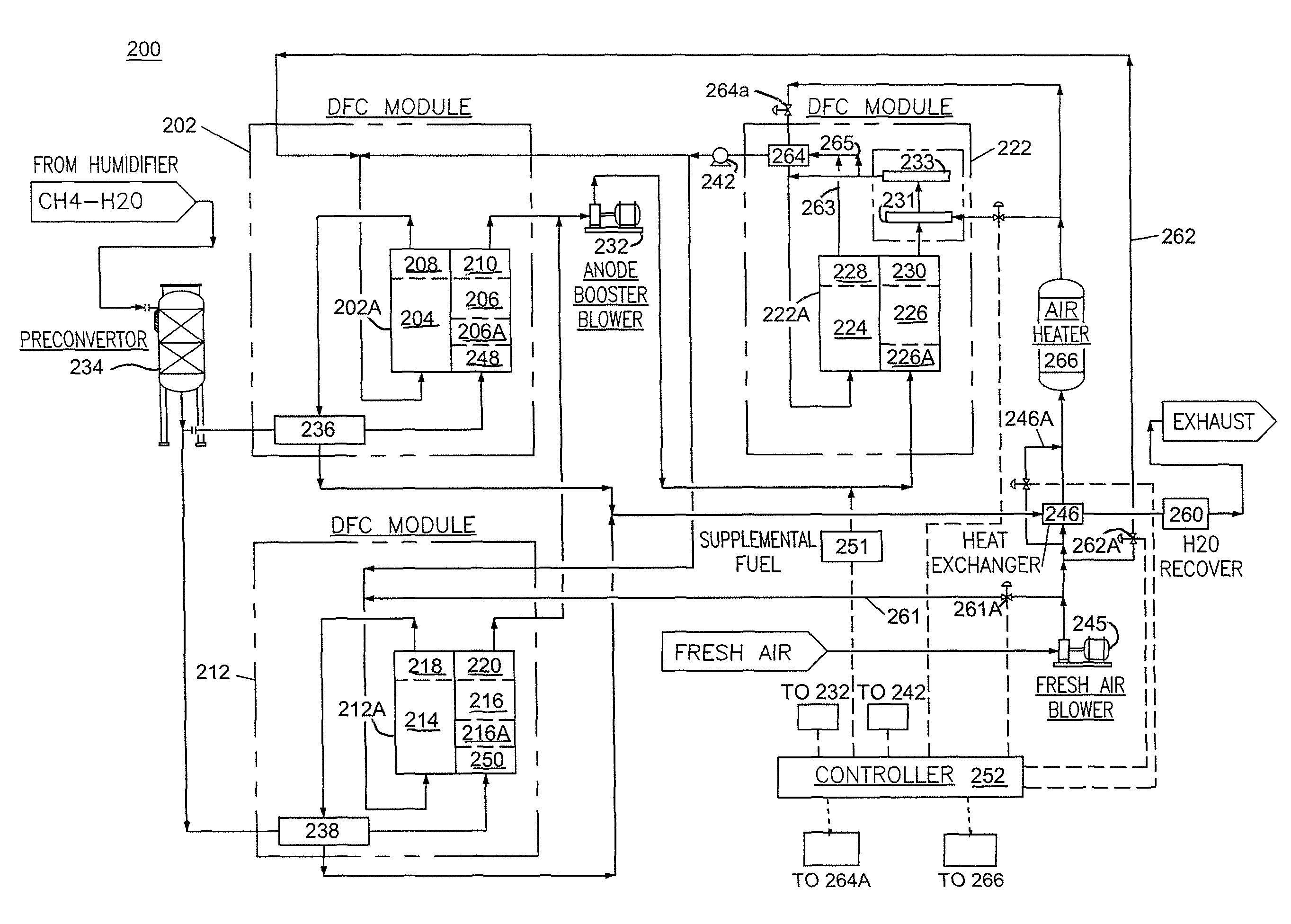High-efficiency molten carbonate fuel cell system and method
a fuel cell and molten carbonate technology, applied in the direction of fuel cells, fuel cell grouping, fuel cells, etc., can solve the problems of material and cost disadvantages, and achieve the effect of increasing the overall fuel utilization and electrical efficiency of the system
- Summary
- Abstract
- Description
- Claims
- Application Information
AI Technical Summary
Benefits of technology
Problems solved by technology
Method used
Image
Examples
Embodiment Construction
[0033]As shown and described below, the present invention provides a cost-effective, modular fuel cell system, in which higher overall fuel utilization and higher electrical power output and conversion system efficiency are achieved while maintaining thermal balance within the fuel cells. In accordance with the present invention, the fuel cell system includes a plurality of fuel cell stacks or a plurality of fuel cell stack modules including topping stack(s) or topping stack module(s) and bottoming stack(s) or bottoming stack module(s), and wherein the topping stack(s) / module(s) receive fresh fuel and partially spent fuel from the exhaust of the topping fuel cell stack(s) / module(s) is supplied to the bottoming fuel cell stack(s) / module(s). In the configuration of the system of the present invention, fuel utilization in the topping and bottoming fuel cell stacks / modules are controlled within desired limits while still increasing the overall fuel utilization and electrical efficiency ...
PUM
| Property | Measurement | Unit |
|---|---|---|
| current density | aaaaa | aaaaa |
| current | aaaaa | aaaaa |
| pressure | aaaaa | aaaaa |
Abstract
Description
Claims
Application Information
 Login to View More
Login to View More - R&D
- Intellectual Property
- Life Sciences
- Materials
- Tech Scout
- Unparalleled Data Quality
- Higher Quality Content
- 60% Fewer Hallucinations
Browse by: Latest US Patents, China's latest patents, Technical Efficacy Thesaurus, Application Domain, Technology Topic, Popular Technical Reports.
© 2025 PatSnap. All rights reserved.Legal|Privacy policy|Modern Slavery Act Transparency Statement|Sitemap|About US| Contact US: help@patsnap.com



